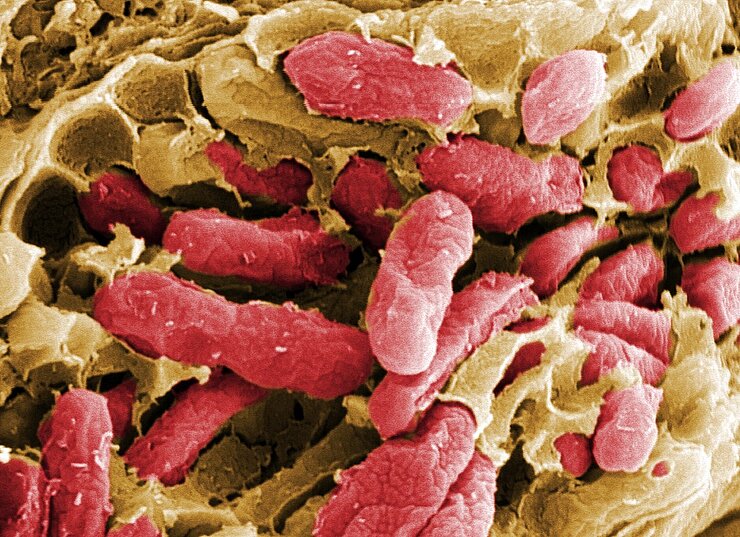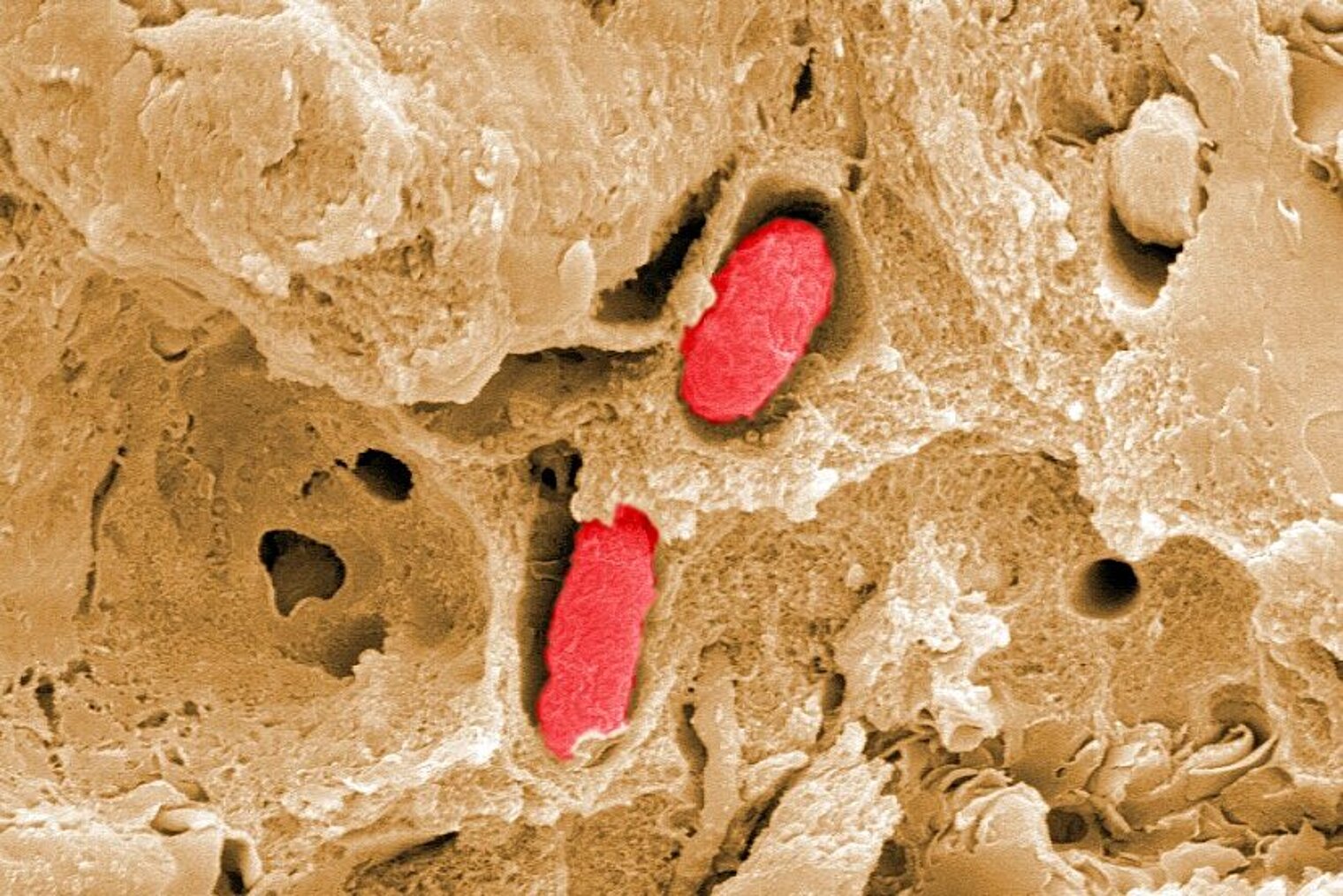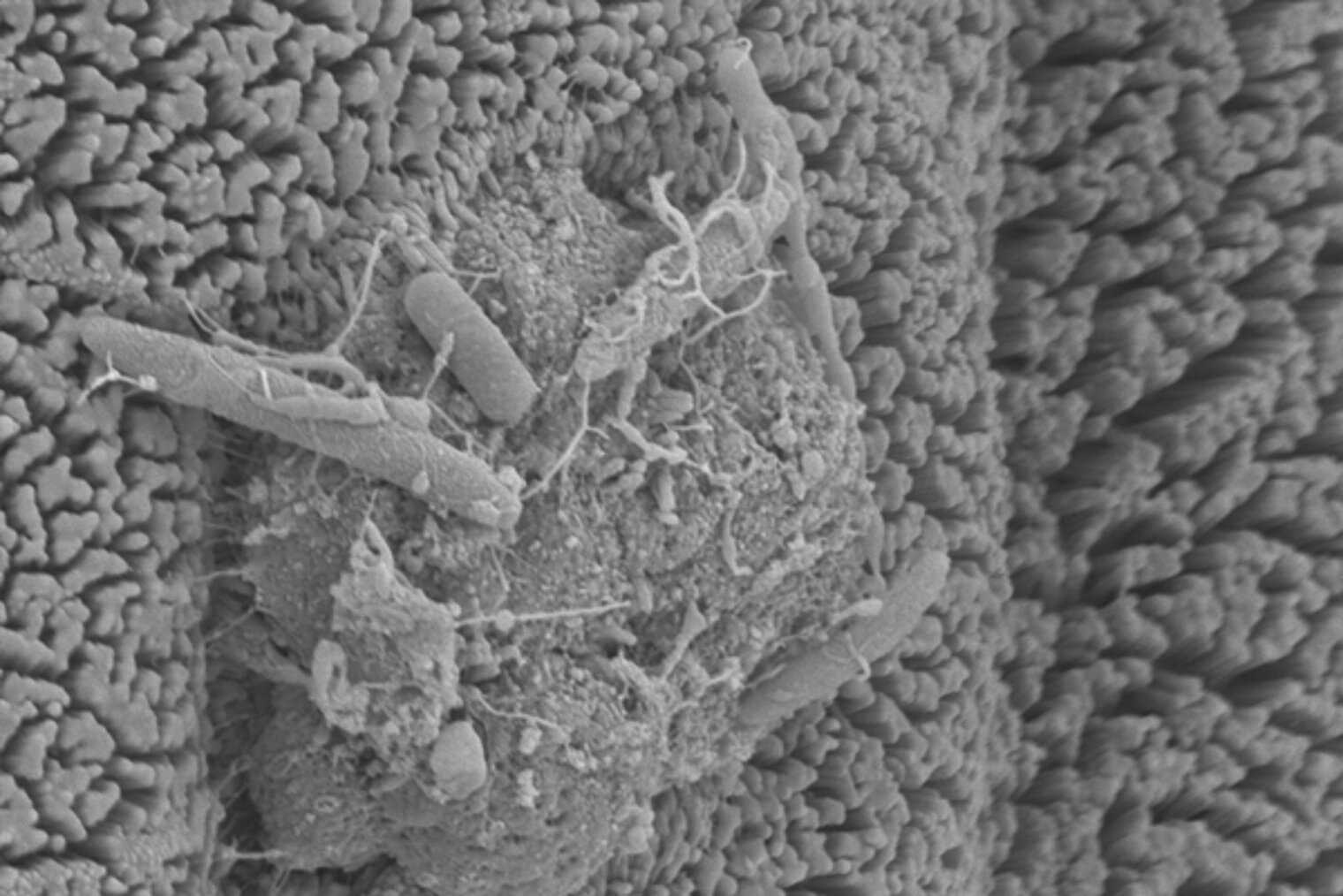Salmonellae

Salmonellae often make the headlines in summer when they spoil a mayonnaise, a milk-based ice cream or whipped egg whites. Not rarely, infections are caused by careless, unhygienic handling of poultry in a kitchen. Especially chickens harbour a large number of Salmonellae, and the Salmonella load of the animals is the higher, the more confined they are in the breeding facilities.
The corollary of Infection in humans: Severe diarrhoea and high fever. The rod-shaped bacteria are so aggressive and quick that they cause approximately 50,000 cases of salmonellosis each year. In small children and the elderly, Salmonella infection can become life-threatening – salmonelloses are notifiable diseases according to the German Law on Prevention and Control of Infectious Diseases.
Salmonellae were named in 1890 after the veterinarian, Daniel Elmer Salmon, who identified them as the cause of "hog cholera". Although we have been living with Salmonellae infections for centuries, the exact mechanisms by means of which they infect us are not very well-known yet. Scientists of the Helmholtz Centre for Infection Research look at Salmonellae from very different angles. They research not only the molecular backgrounds of Infection, but also make use of the properties of these bacteria in the fight against tumours.
The injection kit of Salmonellae
Salmonellae leave nothing to chance in the Infection of the host: The bacteria are taken up into the intestines with food and then move actively to the intestinal cells by means of a rotating flagellum. Then the bacteria dock onto the cells and inject signal substances into the cells using a molecular needle. These signal substances make the intestinal cell take up the Salmonella – the Infection is on its way. What exactly is this signal, what exactly happens in the intestinal cell, how does Salmonella spread throughout the body, and how can we defend ourselves against these processes, these are some of the questions our researchers aim to answer. But only once they know the molecular mechanisms, they can develop new strategies against serious bacterial infections. Salmonella is an object of research per se, but it is also a model system, since other pathogens also use flagellum and injection needle to infect organisms.
Using one devil against another
But the aggressive behavior of these bacteria has some positive aspects as well: Scientists observed as early as in the beginning of the 19th century that Salmonellae can accumulated in the tumours of cancer patients and might cause the tumour to die. However, since the severe bacterial Infection often killed the cancer patients, this method was long considered to be a therapeutic dead-end. Scientists of the Helmholtz Centre for Infection Research resuscitated the idea though and investigated the mechanisms underlying the observed effect in order to be able to use it for treatments and to prevent the serious adverse effects. Some success has already been achieved in the therapy of tumours in mice. The treatment of cancer diseases with Salmonellae is still a scientific vision - but without visions, there would be no scientific progress.
(jsg)


